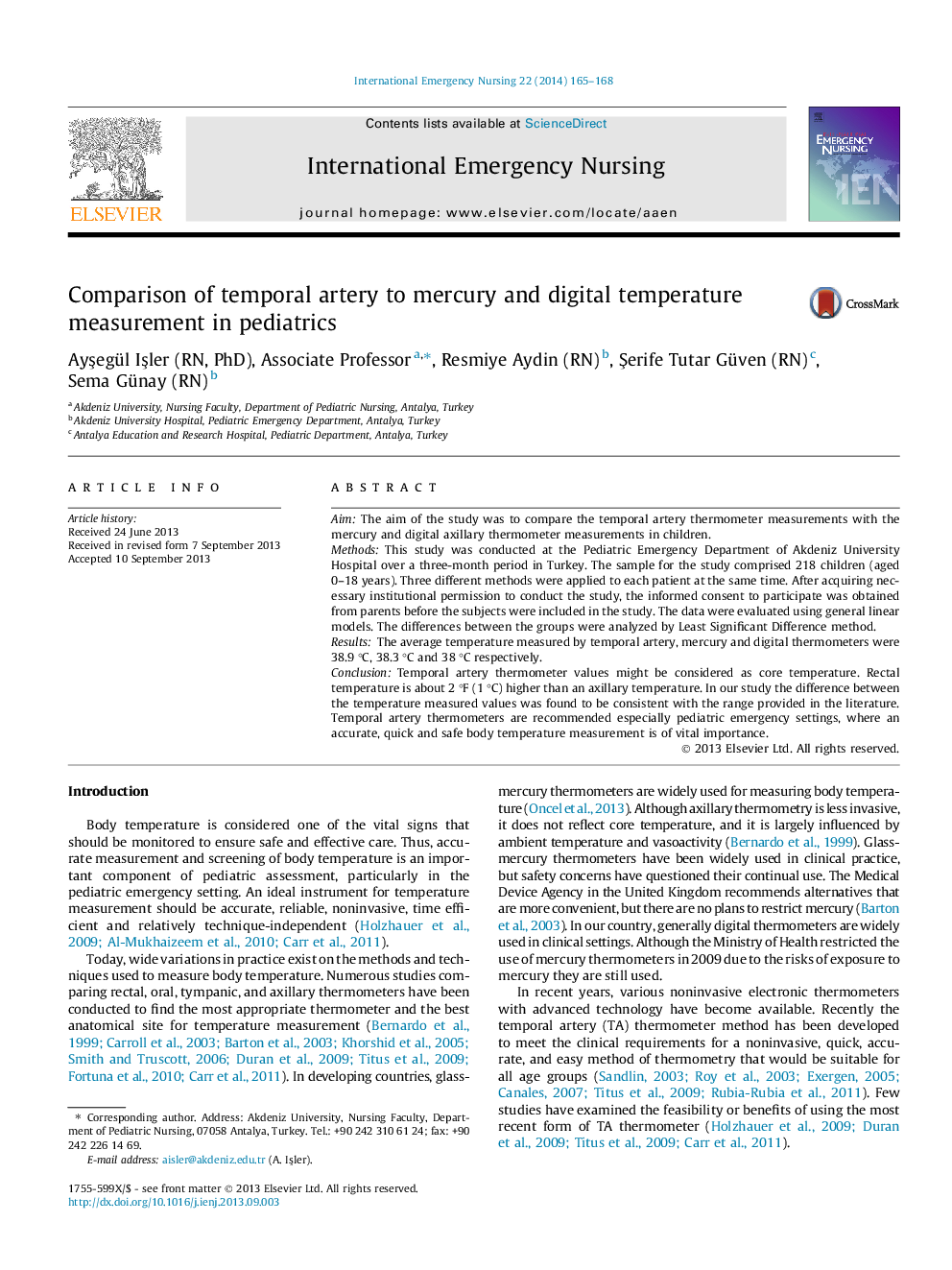| Article ID | Journal | Published Year | Pages | File Type |
|---|---|---|---|---|
| 2609239 | International Emergency Nursing | 2014 | 4 Pages |
AimThe aim of the study was to compare the temporal artery thermometer measurements with the mercury and digital axillary thermometer measurements in children.MethodsThis study was conducted at the Pediatric Emergency Department of Akdeniz University Hospital over a three-month period in Turkey. The sample for the study comprised 218 children (aged 0–18 years). Three different methods were applied to each patient at the same time. After acquiring necessary institutional permission to conduct the study, the informed consent to participate was obtained from parents before the subjects were included in the study. The data were evaluated using general linear models. The differences between the groups were analyzed by Least Significant Difference method.ResultsThe average temperature measured by temporal artery, mercury and digital thermometers were 38.9 °C, 38.3 °C and 38 °C respectively.ConclusionTemporal artery thermometer values might be considered as core temperature. Rectal temperature is about 2 °F (1 °C) higher than an axillary temperature. In our study the difference between the temperature measured values was found to be consistent with the range provided in the literature. Temporal artery thermometers are recommended especially pediatric emergency settings, where an accurate, quick and safe body temperature measurement is of vital importance.
